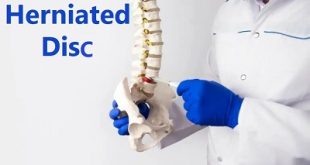What is Hennekam Syndrome?
Hennekam syndrome, also known as Hennekam lymphangiectasia-lymphedema syndrome (HS), is an extremely rare genetic disorder characterized by a variety of physical and developmental abnormalities. It falls under the category of lymphatic dysplasia disorders, affecting the lymphatic system, which is responsible for maintaining the body’s fluid balance and filtering harmful substances. Individuals with Hennekam syndrome often present with swelling (lymphedema) in various parts of the body, including the limbs and face, due to impaired lymphatic drainage. This swelling can be present at birth or develop later in infancy. Other common features include intellectual disability, delayed growth and development, distinctive facial features, such as a flattened nasal bridge and widely spaced eyes, and abnormalities of the cardiovascular system, kidneys, and intestines. The severity of symptoms can vary widely among affected individuals, making it challenging to diagnose and manage the condition effectively.
Hennekam syndrome is caused by mutations in certain genes that are essential for the development and functioning of the lymphatic system. As a rare disorder, it poses significant challenges for both affected individuals and their families. There is currently no cure, and treatment primarily focuses on managing the symptoms and improving the affected individual’s quality of life. This may involve therapies to reduce lymphedema, interventions to address specific health issues, and supportive care to help individuals reach their full potential despite the challenges posed by the condition. Genetic counseling and support from healthcare professionals and patient advocacy groups play a crucial role in helping families affected by Hennekam syndrome navigate the complexities of this rare genetic disorder.
What are its types?
Hennekam syndrome is a rare disorder, and there is limited information available on its specific types. However, different sources may refer to variations of the syndrome based on the specific genetic mutations or variations in symptoms among affected individuals. It’s important to note that the classification of these types might not be universally agreed upon within the medical community due to the rarity and complexity of the condition.
One classification that is sometimes used includes two types include:
Hennekam Syndrome Type 1 (HS1)
This type is associated with mutations in the CCBE1 gene. Mutations in this gene disrupt the development of the lymphatic system, leading to lymphedema and other characteristic features of the syndrome.
Hennekam Syndrome Type 2 (HS2)
This type is linked to mutations in the FAT4 gene. FAT4 is involved in controlling the growth and movement of cells. Mutations in this gene can affect the development of various body systems, including the lymphatic system, leading to the symptoms seen in Hennekam syndrome.
It’s essential to consult with a medical professional or genetic counselor for the most up-to-date and accurate information regarding the types and classifications of Hennekam syndrome.
Prevalence
Its prevalence is not well-documented. Due to its rarity, exact figures regarding the number of affected individuals worldwide are challenging to ascertain. Hennekam syndrome affects both males and females from diverse ethnic backgrounds. The scarcity of reported cases suggests that the condition occurs infrequently in the general population. However, advancements in genetic testing and increased awareness within the medical community may lead to more accurate diagnoses and a better understanding of its prevalence in the future. Despite its rarity, the impact on affected individuals and their families can be profound, necessitating specialized medical care and support to enhance the quality of life for those living with this condition.
Pathophysiology
The specific pathophysiology revolves around mutations in certain genes that are critical for normal lymphatic development and function.
In the case of Type 1 (HS1), mutations in the CCBE1 gene impair the formation of lymphatic vessels during embryonic development. CCBE1 provides instructions for producing a protein crucial for the growth and maintenance of lymphatic vessels. When this gene is mutated, it disrupts the development of these vessels, leading to inadequate drainage of lymphatic fluid. This impaired drainage manifests as lymphedema, the hallmark symptom of Hennekam syndrome.
Similarly, Type 2 (HS2) is caused by mutations in the FAT4 gene. FAT4 is involved in regulating cell growth and movement, and its mutations can impact the formation and functioning of various body systems, including the lymphatic system. Disrupted FAT4 function affects the normal development of lymphatic vessels, contributing to the lymphatic abnormalities observed in Hennekam syndrome.
These genetic mutations result in the characteristic features of Hennekam syndrome, including lymphedema, intellectual disabilities, distinctive facial features, and other developmental abnormalities. The variable expression and severity of symptoms among individuals with Hennekam syndrome highlight the intricate interplay between genetic factors and complex biological processes during early development. Ongoing research continues to explore the detailed mechanisms underlying the pathophysiology of Hennekam syndrome, aiming to enhance our understanding of this rare condition and potentially inform future therapeutic interventions.
Patients with Hennekam Syndrome
Symptoms of Hennekam Syndrome
The common symptoms associated are as follows:
- Lymphedema: Swelling in different parts of the body, often the limbs and face, due to impaired lymphatic drainage.
- Intellectual Disability: Developmental delays and intellectual challenges that can vary in severity.
- Distinctive Facial Features: Individuals may have specific facial characteristics such as a flattened nasal bridge and widely spaced eyes.
- Delayed Growth: Slower than normal growth in height and weight, which can become apparent in childhood.
- Cardiovascular Abnormalities: Some individuals might have heart-related issues, although these can vary widely.
- Genitourinary Abnormalities: Abnormalities in the genital and urinary systems might be present in some cases.
- Gastrointestinal Issues: Problems with the digestive system, although the specifics can vary.
- Feeding Difficulties: Infants might have difficulties with feeding, which could be due to oral-motor problems or other factors.
- Hearing Impairment: Hearing problems can be associated with Hennekam syndrome in some cases.
- Skeletal Abnormalities: Unusual skeletal features or bone problems might be present in some individuals.
Causes of Hennekam Syndrome
The causes presented as follows:
- Genetic Mutations: Hennekam syndrome is primarily caused by mutations in specific genes. Mutations in the CCBE1 gene are associated with Hennekam Syndrome Type 1 (HS1), while mutations in the FAT4 gene are linked to Hennekam Syndrome Type 2 (HS2).
- Autosomal Recessive Inheritance: Hennekam syndrome is inherited in an autosomal recessive manner, meaning that individuals with the condition have inherited two copies of the mutated gene, one from each parent. Carriers, who have one normal and one mutated copy of the gene, do not typically show symptoms but can pass the mutated gene to their children.
- Lymphatic System Disruption: The mutations in the associated genes disrupt the normal development and functioning of the lymphatic system. The lymphatic system is responsible for maintaining the body’s fluid balance, filtering harmful substances, and supporting the immune system. Disruptions in this system lead to the characteristic symptoms of Hennekam syndrome, including lymphedema and other physical and developmental abnormalities.
- Protein Function Impairment: The mutated genes (CCBE1 and FAT4) provide instructions for making proteins that are essential for the formation and maintenance of lymphatic vessels. Mutations in these genes impair the functions of these proteins, leading to abnormalities in the lymphatic system and other affected body systems.
- Variable Severity: The severity of Hennekam syndrome can vary widely among affected individuals. Different mutations and their specific effects on protein function can result in varying degrees of symptoms, even among individuals with the same type of Hennekam syndrome.
Complications
Hennekam syndrome can lead to various complications due to its impact on the lymphatic system and other affected body systems. The complications can vary widely in severity and can affect different aspects of an individual’s health. Some potential complications include:
- Chronic Lymphedema: The persistent swelling caused by impaired lymphatic drainage can lead to chronic lymphedema, which may cause discomfort, limited mobility, and an increased risk of skin infections.
- Intellectual and Developmental Disabilities: Many individuals with Hennekam syndrome have intellectual disabilities, which can lead to challenges in education, social interactions, and daily living activities.
- Skeletal Abnormalities: Some individuals may experience skeletal problems, such as joint contractures or abnormal bone development, which can lead to mobility issues and pain.
- Cardiovascular Issues: Abnormalities in the cardiovascular system can pose risks, potentially leading to heart problems and hypertension.
- Genitourinary Abnormalities: Issues related to the genital and urinary systems can cause complications, including difficulty with urination or reproductive difficulties.
- Gastrointestinal Problems: Abnormalities in the gastrointestinal tract might lead to feeding difficulties, digestive problems, or malnutrition.
- Hearing Impairment: Some individuals may have hearing problems, which can impact communication and overall quality of life.
- Respiratory Issues: In severe cases it might lead to respiratory difficulties, especially if the lymphatic system abnormalities affect the lungs or airways.
- Increased Infection Risk: Due to the compromised lymphatic system and potential skin breakdown from chronic swelling, individuals with Hennekam syndrome might be more susceptible to infections.
- Psychosocial Challenges: Coping with chronic health issues and developmental disabilities can lead to psychosocial challenges, including emotional and social difficulties for both affected individuals and their families.
What are its risk factors?
The primary risk factor is having parents who are carriers of the mutated gene. The condition follows an autosomal recessive inheritance pattern. Here’s what that means in terms of risk factors:
- Carrier Parents: Hennekam syndrome is caused by mutations in genes that a child inherits from both parents. If both parents are carriers of the mutated gene, there is a 25% chance with each pregnancy that their child will inherit two copies of the mutated gene and be affected by Hennekam syndrome.
- Family History: Families with a history of Hennekam syndrome or known carriers of the mutated gene are at risk of having children with the disorder if both parents are carriers.
- Consanguinity: If close relatives, such as first cousins, have children together, there is an increased risk. Consanguineous marriages can amplify the risk because both parents are more likely to carry the same rare mutated gene.
How to diagnosis Hennekam Syndrome?
Diagnosing involves a combination of clinical evaluation, medical history analysis, and genetic testing. Here are the steps typically involved in diagnosing Hennekam syndrome:
Clinical Evaluation
A healthcare professional, usually a geneticist or a pediatrician, evaluates the individual’s symptoms and conducts a thorough physical examination. Key features, such as lymphedema, distinctive facial characteristics, and developmental delays, are assessed.
Medical History
Gathering a detailed medical history, including information about the presence and progression of symptoms, developmental milestones, and any family history of similar conditions, is crucial for the diagnostic process.
Genetic Testing
Genetic testing is the definitive method for diagnosing Hennekam syndrome. Molecular genetic testing, such as DNA sequencing, can identify mutations in the specific genes associated with Hennekam syndrome, namely CCBE1 for Type 1 (HS1) and FAT4 for Type 2 (HS2). Genetic testing can confirm the presence of mutations in these genes, providing a definitive diagnosis.
Prenatal Testing
If there is a known family history of Hennekam syndrome or if both parents are carriers of the mutated gene, prenatal testing, such as chorionic villus sampling (CVS) or amniocentesis, can be performed to diagnose the condition in the developing fetus.
Imaging Studies
In some cases, imaging studies such as ultrasound, magnetic resonance imaging (MRI), or lymphoscintigraphy may be used to assess the lymphatic system and confirm the presence of lymphatic abnormalities, especially in cases where lymphedema is a prominent symptom.
It’s important to note that the diagnostic process may vary based on the healthcare provider’s experience and the specific symptoms presented by the individual.
Treatment for Hennekam Syndrome
There is no specific cure for Hennekam syndrome. Treatment primarily focuses on managing the symptoms and providing supportive care to improve the individual’s quality of life. The management of Hennekam syndrome typically involves a multidisciplinary approach, with various healthcare professionals collaborating to address the specific needs of the affected individual. Here are some aspects of the treatment and management of Hennekam syndrome:
Lymphedema Management
Lymphedema, or swelling due to impaired lymphatic drainage, is a common symptom. Treatment may include compression garments, specialized massage techniques (manual lymphatic drainage), and physical therapy to manage and reduce lymphedema.
Physical and Occupational Therapy
Physical and occupational therapy can help individuals improve their motor skills, mobility, and independence. These therapies are tailored to the specific needs of the individual and can address developmental delays and mobility challenges.
Speech and Language Therapy
For individuals with speech and language difficulties, speech therapy can be beneficial in improving communication skills and language development.
Nutritional Support
Individuals with Hennekam syndrome, especially those with feeding difficulties or gastrointestinal issues, may require specialized nutritional support. Dietitians and healthcare providers can work together to ensure adequate nutrition and address specific dietary needs.
Surgical Interventions
In some cases, surgery might be necessary to address complications associated with Hennekam syndrome. Surgical procedures can include interventions to improve lymphatic drainage, correct skeletal abnormalities, or address other specific issues.
Cardiac and Respiratory Monitoring
Regular monitoring and management of cardiovascular and respiratory issues, if present, are essential to maintaining overall health.
Genetic Counseling
Genetic counseling is crucial for families affected by Hennekam syndrome. It provides information about the condition, discusses the risk of recurrence in future pregnancies, and helps families make informed decisions about family planning.
Psychosocial Support
Coping with a rare and complex condition can be challenging for both individuals and families. Psychosocial support, including counseling and support groups, can provide emotional and social support.
Prevention of Hennekam Syndrome
It is a genetic disorder, and currently, there are no known methods for preventing the condition if both parents are carriers of the mutated gene. However, there are several steps that individuals and families who are at risk of having a child with Hennekam syndrome can consider:
- Genetic Counseling: Seek advice from genetic counselors if there is a family history of Hennekam syndrome. They can provide information about the risk and available testing options.
- Carrier Testing: Individuals with a family history can undergo carrier testing to check if they carry the mutated gene. If both partners are carriers, they can explore further options.
- Prenatal Testing: For pregnant couples at risk, tests like chorionic villus sampling (CVS) or amniocentesis can diagnose Hennekam syndrome in the unborn child, aiding in decision-making.
- Pre-implantation Genetic Diagnosis (PGD): During in vitro fertilization (IVF), PGD allows screening embryos for the mutated gene before implantation, ensuring unaffected pregnancies.
- Consult Professionals: Always consult healthcare professionals and genetic counselors for personalized guidance tailored to individual situations and preferences.
 Diseases Treatments Dictionary This is complete solution to read all diseases treatments Which covers Prevention, Causes, Symptoms, Medical Terms, Drugs, Prescription, Natural Remedies with cures and Treatments. Most of the common diseases were listed in names, split with categories.
Diseases Treatments Dictionary This is complete solution to read all diseases treatments Which covers Prevention, Causes, Symptoms, Medical Terms, Drugs, Prescription, Natural Remedies with cures and Treatments. Most of the common diseases were listed in names, split with categories.







